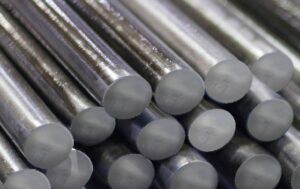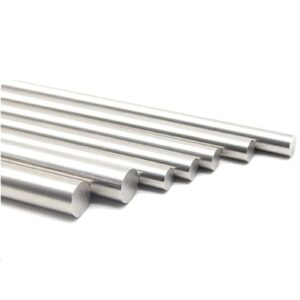Stainless steel is a versatile material known for its corrosion resistance and durability. Among the various stainless steel alloys, 316 stainless steel stands out as a popular choice for many industrial applications. In this comprehensive guide, we will delve into the key properties of 316 stainless steel round bars, providing an in-depth understanding of why this alloy is highly sought after in various industries.
Understanding Stainless Steel Alloys
Before we explore the specific properties of 316 stainless steel round bars, it’s essential to have a basic understanding of stainless steel alloys.
What is Stainless Steel?
Stainless steel is an alloy of iron, chromium, and other elements. It is called “stainless” due to its remarkable resistance to corrosion and staining, making it ideal for a wide range of applications.
Types of Stainless Steel Alloys
There are various types of stainless steel alloys, each designed for specific applications. These alloys differ in their composition and properties, and one such alloy is 316 stainless steel.
Introduction to 316 Stainless Steel
316 stainless steel, also known as marine-grade stainless steel, is one of the most popular stainless steel alloys. It contains several key elements that give it unique properties.
Composition of 316 Stainless Steel
316 stainless steel is primarily composed of:
- Chromium (Cr): Provides corrosion resistance.
- Nickel (Ni): Enhances resistance to acids and high temperatures.
- Molybdenum (Mo): Increases corrosion resistance, particularly in chloride environments.
Key Properties of 316 Stainless Steel Round Bars
Now, let’s explore the essential properties that make 316 stainless steel round bars highly desirable:
1. Corrosion Resistance
316 stainless steel is renowned for its exceptional corrosion resistance, particularly in aggressive environments. This property makes it suitable for applications in marine, chemical, and pharmaceutical industries where exposure to corrosive substances is common.
2. High Temperature Resistance
Another significant property of 316 stainless steel is its ability to withstand high temperatures. It maintains its strength and structural integrity even at elevated temperatures, making it suitable for applications in heat exchangers and exhaust systems.
3. Strength and Durability
316 stainless steel exhibits excellent tensile strength and durability. It can withstand heavy loads and is often used in structural components and equipment subjected to mechanical stress.
4. Formability and Weldability
This alloy is known for its ease of fabrication. It can be readily formed into various shapes and sizes, making it versatile for manufacturing processes. Additionally, it is highly weldable, allowing for easy assembly of complex structures.
5. Biocompatibility
The biocompatibility of 316 stainless steel makes it a preferred choice in the medical field. It is used in the manufacturing of surgical instruments, implants, and medical equipment due to its non-reactive nature within the human body.
6. Aesthetic Appeal
316 stainless steel has an attractive, polished appearance that lends itself well to architectural and decorative applications. It is commonly used in the construction of modern buildings, interior design, and artistic installations.
FAQ
Q1. Is 316 stainless steel magnetic?
No, 316 stainless steel is generally non-magnetic. Its austenitic structure renders it non-magnetic, making it suitable for applications where magnetism is undesirable.
Q2. Can 316 stainless steel corrode under any circumstances?
While 316 stainless steel has excellent corrosion resistance, it is not entirely immune to corrosion. In extremely harsh environments, such as highly concentrated acids, it may corrode, albeit at a slower rate compared to other materials.
Q3. Are there any alternatives to 316 stainless steel for corrosion-resistant applications?
Yes, there are other stainless steel alloys, such as 304 stainless steel and duplex stainless steels, that offer varying degrees of corrosion resistance. The choice of alloy depends on the specific environmental conditions and requirements of the application.
Q4. How can I maintain the appearance of 316 stainless steel in outdoor applications?
Regular cleaning and routine maintenance can help preserve the aesthetic appeal of 316 stainless steel in outdoor environments. Avoiding exposure to harsh chemicals and abrasive materials is also advisable.
Conclusion
In conclusion, 316 stainless steel round bars possess a remarkable combination of properties that make them indispensable in a wide range of applications. Their corrosion resistance, high-temperature tolerance, strength, and versatility have solidified their reputation as a top choice for industries seeking durable and reliable materials. Whether in marine engineering, medical devices, or architectural design, 316 stainless steel continues to prove its worth as a valuable alloy in countless applications.


